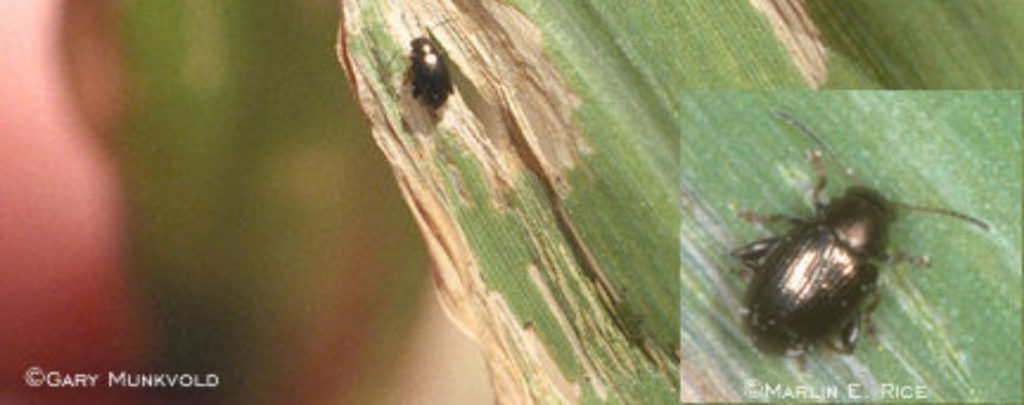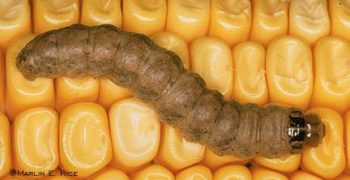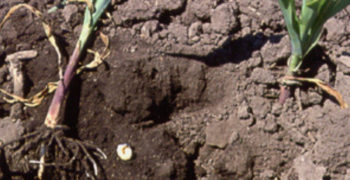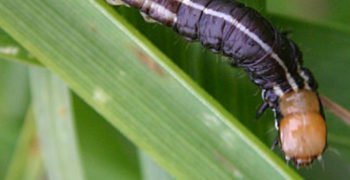Description:
The Corn Flea Beetle is a 1/16 inch long black, brown, or gray insect with thickened hind legs that permit it to jump considerable distances when it is disturbed. Flea Beetle eggs are deposited on corn leaves, weeds, or other cultivated crops, or in the soil near the host plant. The larvae hatch, feed on the plants roots, pupate in the soil, and emerge as adults in late July.
Life Cycle:
The Corn Flea Beetle will pass winter as an adult in the soil, debris in fence rows, roadsides, or the edge of woodlands. They become active early in the spring when the weather is typically 65-70˚F. Corn is the primary host for these beetles. They will mate and lay eggs near the host plant. At which the larvae will feed on the plants roots or leaves until they are mature.
Damage:
Corn Flea Beetles feed on corn leaves by stripping away the top layer of plant tissue. This results in long tracks along the leaf that turn gray or brown. Adults scrape long scars into the leaf surface of seedlings, which can cause a bleached appearance. Although the leaf damage to these beetles can look serious, fatal injury only happens to seedlings that are less than 6 inches in height that have a high number of beetles present. Severely damaged plants from Corn Flea Beetles will tend to look like they have bad frost damage. Stewarts Disease is the main threat that Corn Flea Beetles can have. They can carry the bacterium for Stewarts Disease and this disease can severely reduce yield.
Scouting Tip:
The best time to scout is V3 through R2. Look for light colored plants or wilted leaves. Injury is most severe during cool springs. Typically once a corn plant reaches V5, it is no longer susceptible to significant Corn Flea Beetle damage.
Management:
Prior to plant stage V4, if roughly 50% of the plants inspected in the field has signs of Corn Flea Beetles then necessary action may be needed to take place. Spraying insecticides are a common way to get rid of Corn Flea Beetle.



